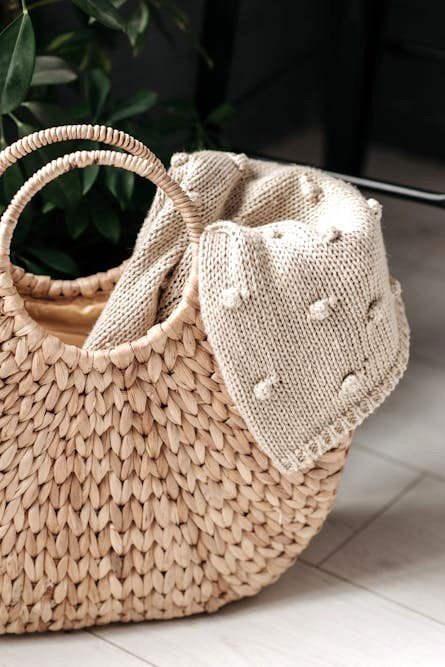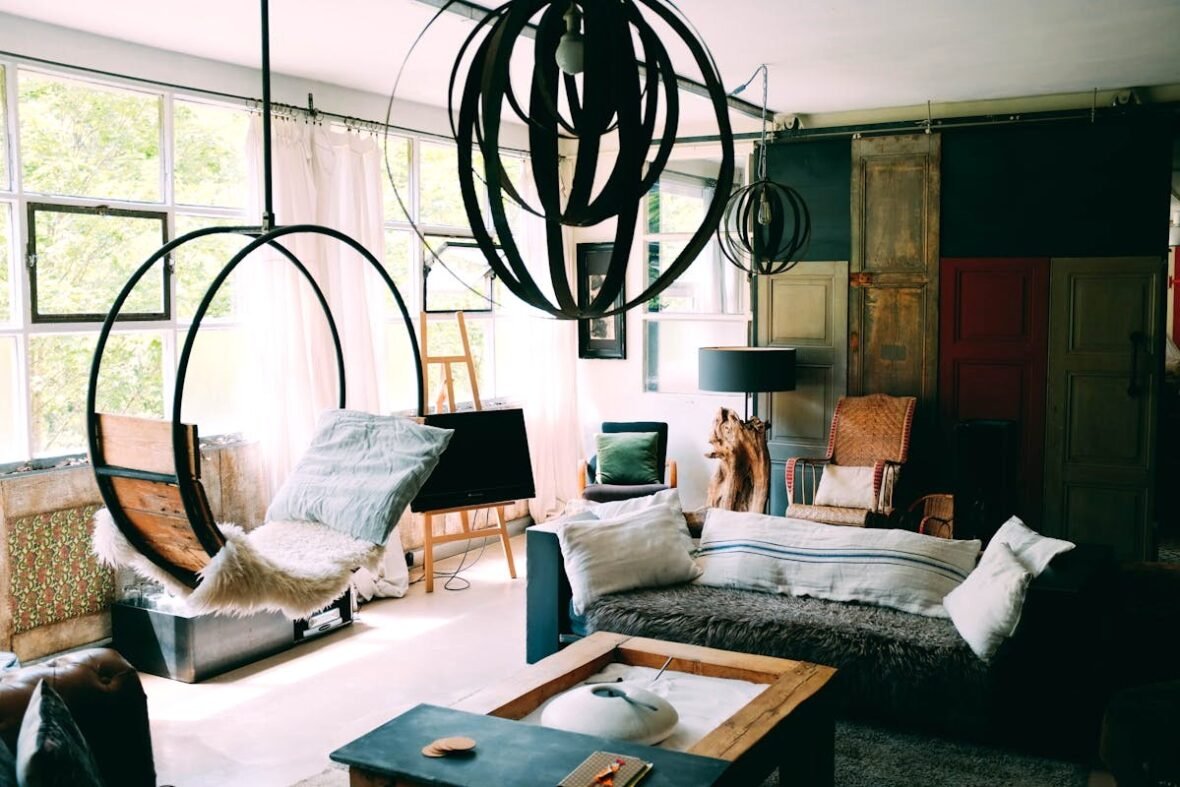The Connection Between Your Space and Your Well-Being
Small apartments often get a bad rap—cramped, chaotic, and cluttered. But with a little intention and creativity, your small space can become a calming sanctuary. The way your environment feels shapes your thoughts, energy, and habits. If you’re craving more peace, your surroundings are a powerful place to start.
This guide isn’t just about aesthetics—it’s about creating a nurturing environment that feels like an exhale after a long day. Whether you’re in a studio or a snug one-bedroom, it’s possible to transform your apartment into a restful space that supports your nervous system, sparks inspiration, and invites you to slow down.
1. Start with a Clear Vision (Even If Your Space Feels Like a Mess)
Before rearranging anything, pause and ask: How do I want to feel when I walk in? Peaceful? Light? Refreshed? Safe? Naming that feeling is more important than any design trend.
Once you have that vision, it becomes your guiding filter. If calm is your goal, clear visual clutter and soften harsh lighting. If inspiration is your aim, carve out a tiny corner for art or journaling.
Mini Exercise:
Write 3–5 feeling words on a sticky note or notecard—“calm,” “cozy,” “bright”—and keep it visible. Let those words guide every small change in your home.
2. Decluttering Tips to Create a Restful Space
Decluttering isn’t about throwing everything away. It’s about keeping what feels meaningful and letting go of what no longer serves. A restful space doesn’t mean empty shelves—it means intentional surroundings.
Start small: one drawer, one shelf. Often, we hold onto things out of guilt or indecision. Small-space living thrives on clarity.
Smart Storage Ideas
To avoid visual overwhelm, consider hidden storage that doubles as decor:
- Woven storage baskets – Ideal for blankets, tech cords, or snacks.
Hand-woven storage baskets in natural tones blend with most decor. They’re both practical and stylish. - Under-bed storage bins – Fabric-covered or zippered options look softer than plastic.
I really like under bed storage because it’s compact and practical. You can easily pack and store your clothing until you’re ready for it. - Floating wall shelves – Save floor space while displaying books, candles, or plants.
Minimalist wooden floating shelves add a simple, elegance touch to any space.
You don’t have to tackle it all at once. Even one organized drawer can bring surprising relief.
3. How to Create Restful Zones in Small Apartments
In a small apartment, your living room might also be your bedroom, office, and dining area. The secret isn’t more space—it’s creating “zones” that support different activities.
Here’s how to set up soft, calming zones without building walls:
a. The Rest Corner
Select a spot—perhaps a chair by a window—just for recharging. Keep it clear of work items. Add a throw, soft lighting, and something that signals rest like a favorite book or mug.
Cozy additions that make a difference:
- Weighted throw blanket – Offers soothing pressure and folds compactly.
This knitted weighted throw blanket is perfect for small spaces and will have you wanting to nap for hours. - Compact floor lamp with dimmer – Soft lighting signals it’s time to unwind.
Try a dimmable LED floor lamp with a lamp shade made of natural fibers, such a linen. Lamps like these offer a calm glow that promote relaxation.
b. The Creative Nook
You don’t need a full studio—just a small desk, lap tray, or drawer dedicated to creativity.
Ideas for a creative nook:
- A fold-down wall-mounted desk
- A corkboard or magnet board filled with inspiring items
- A container with your favorite journals, watercolors, or pens
Keeping tools accessible (but tidy) encourages regular creative practice and eases decision fatigue.

4. Using Scent and Sound to Build a Restful Space
Our senses greatly influence how relaxed—or stimulated—we feel. Even if you can’t control external noise, you can curate a calming sensory environment.
Scent Suggestions
- Essential oil diffusers – Choose quiet, low-light models with auto shut-off.
A ceramic essential oil diffuser with a timer & soft glow can add a gentle ambiance that isn’t overpowering. - Beeswax or soy candles – Opt for natural scents like lavender, sandalwood, or bergamot.
Non‑toxic soy candles in calming scents help elevate the mood safely.
Soothing Sound Tools
- White noise machine – Can be very useful, especially if you live in a noisy area or with roommates.
A white noise machine with nature sounds and volume control helps mask distractions. Set it on a timer or allow it to play until you awaken. - Bluetooth speaker – Create a calm playlist with ambient sounds, instrumental records, or piano pieces.
Even five minutes of your own scent + sound routine can help reset your nervous system after a draining day.
5. Use Light to Shift the Mood (Without Harsh Overhead Fixtures)
Lighting has a profound influence on how you feel in your home. In many small apartments, overhead lights are often stark and can make a space feel less inviting. The good news? You can layer light sources to create a soft, welcoming ambiance with minimal effort.
Tips for Light Layering in Small Spaces:
- Avoid relying solely on overhead lights. These can feel sterile and draining, especially in the evening.
- Instead, add 2–3 sources of softer light throughout your space: floor lamps, wall sconces, or candles.
- Opt for warm white bulbs (around 2700K) for a cozy, calming glow.
For example, you might place a dimmable table lamp with a linen shade beside your favorite reading chair or workspace. One that offers a warm, comfortable glow and built-in USB charging, reducing cord clutter.
To create a more ambient atmosphere, try plug-in wall sconces with fabric shades—they’re easy to install and perfect for flanking a bed or softly lighting a hallway. And if you’d like a whimsical, cozy feel, a strand of warm white string lights draped over a curtain rod or around a cozy nook can work wonders.
6. Choose Colors That Soothe and Support You
The colors in your apartment play a huge role in shaping its atmosphere. While light can influence mood, color can deeply impact how calm or energized you feel.
Restful Color Palettes to Consider:
- Earthy Neutrals like soft taupes, creams, and clay evoke warmth and balance.
- Cool Blues & Greens such as pale sage and dusty blue create a sense of calm and relaxation.
- Soft Muted Tones like mauve, blush, and lavender offer a gentle, soothing energy.
Even if you can’t paint your walls, you can introduce these tones into your restful space through textiles and decor. For instance, a collection of boho pillow covers can instantly create a cozy, inviting environment. A pair of sage green room darkening curtains not only provides privacy but also reinforces a calm mood, especially in the evenings.
An understated neutral low-pile area rug with subtle texture can tie together colors in your room, offering cohesion, texture, and warmth—without visually overwhelming your small space.

7. Bring Nature Inside to Enhance Your Restful Space
Nature has a calming effect on the mind, reducing stress and promoting well-being. Biophilic design—incorporating natural elements—helps ground your environment and reconnect you with the natural world. You don’t need a large outdoor space to reap the benefits; even small touches can make a big impact.
Easy Ways to Add Nature to Your Home:
- Houseplants are a great place to start. Even if you don’t have a green thumb, plants like pothos, ZZ plants, snake plants and succulents thrive with minimal care. Low-maintenance varieties are great options for new plant parents with small apartments.
- Natural materials also contribute to a biophilic atmosphere. Think woven baskets, wooden furniture, or linen fabrics. A rattan storage ottoman provides natural texture and hides clutter at the same time.
- If you’re short on space for real plants, you can still connect with nature through art. Minimalist wall art featuring landscapes or botanical sketches can evoke serenity and a connection to the outdoors.
By weaving in these elements, even a humble studio can feel like a peaceful retreat.
8. Create a Reset Routine for Visual Clarity
While it’s tempting to keep everything in perfect order, the reality is that even the coziest spaces get messy. The key is in the reset—a quick daily practice that restores calm and order to your environment. In a small apartment, clutter can quickly overwhelm, but you can maintain a sense of tranqulity without striving for perfection.
Here’s a simple reset routine that takes just 10 minutes but leaves a lasting impact on your space:
- Pick one “anchor zone” to reset daily. This might be your entryway, desk, or living room coffee table.
- Set a 10-minute timer and clear surfaces, fluff pillows, or fold any blankets or throws.
- Use baskets or bins to quickly stash things that are out of place. For example, collapsible storage bins are perfect for gathering items like books, tech cords, or stray linens.
Having a natural wood decorative tray makes it easy to corral keys, candles, or small accessories, keeping your space tidy yet stylish. And a digital kitchen timer with a chime can help you stick to your reset practice, turning it into a mini reminder rather than a chore.
9. Soulful Habits That Make Your Space Feel Like Home
Your home isn’t just a container for your stuff—it’s a reflection of your state of mind. When you intentionally build daily rhythms that invite calm, you create a powerful feedback loop: your space nourishes you, and in turn, you care for it more effortlessly.
You don’t need a strict routine. A simple practice—even five minutes long—can anchor your day. This could look like:
- Making your bed slowly, smoothing out the sheets with care.
- Sipping tea near a window before checking your phone.
- Lighting a candle at dusk as a cue to wind down.
Small gestures become meaningful when they’re layered with attention and intention.
For example, placing an essential oil diffuser on your nightstand or entry table adds a soothing element to your morning routine and evening flow. Choose scents like cedarwood or frankincense to support clarity and peace.
A wall grid can help gather valuable items—maybe a favorite book, photos, keys, or a small plant—into a stylish, functional display.
The goal here isn’t perfection. It’s a slow habit of choosing calm over chaos, one step at a time.

10. Reclaim Your Space When You Feel Scattered
Life gets messy—internally and externally. And when you’re living in a small apartment, even a little bit of visual clutter can feel like too much. But instead of striving for constant control, what helps most is building in a few reset moments to get back to your center.
Here are a few strategies for reclaiming your space after a tough or overstimulating day:
a. Use Anchoring Objects
Keep a few objects around that help you shift your mood. A textured throw blanket you love, a ceramic mug that makes tea feel luxurious, or a warm-toned lamp you only turn on during your slow-time hours can all serve as signals to your body and mind: “You’re safe here.”
b. Play Calming Audio
Sound is powerful. Whether it’s lo-fi beats, piano, or ambient nature recordings, having a go-to playlist can help regulate your nervous system. Pair it with a compact bluetooth speaker that doesn’t take up much space, and you’ve created a melodic boundary around your peace.
c. Introduce a “Clearing Practice”
This can be as simple as spending 10 minutes putting away items, misting your favorite scent into the air, or opening a window for fresh air and light. A nature-scented room spray or bundle of dried eucalyptus can add a nice sensory boost.
These little resets aren’t about tidying for the sake of aesthetics—they’re about reconnecting with the feeling of home.
11. Final Touches to Complete Your Restful Space
Now that you’ve laid the foundation for a recharging, restful space, you can begin adding in a few final touches that elevate comfort and reinforce your new daily rhythms.
Try layering in the following elements:
- Textile layering – A soft area rug, an oversized throw, or a tufted floor cushion encourages you to sit, sprawl, or settle more intentionally.
- Sensory anchors – Items like beeswax candles or a weighted eye pillow near your bed or reading corner help set the mood and invite quiet moments.
- Vertical storage with visual appeal – A ladder shelf or wall-mounted rack can keep your essentials within reach without cluttering your limited floor space.
Remember, the goal isn’t to overhaul your space in a weekend. It’s to shape your environment to reflect the kind of energy you want to feel more often.
Living Well in a Small Space Isn’t About Size—It’s About Intention
No matter how limited your square footage, your home can become a restful space that settles your nervous system and supports your creative life. It starts with intention. When you tend to your space, you tend to yourself.
Let this process be slow and supportive. Choose textures and colors that feel good to your senses. Build in small practices that help you feel like yourself. Create corners where you can retreat, daydream, rest, or begin again.
At the end of the day, home isn’t defined by walls or square footage—it’s defined by how you feel inside of it.


